
This month, I’m following a few trends: 2050 carbon neutrality commitments, electric vehicle design and manufacturing partnerships, and generator manufacturers acquiring grid services companies. Also: charging network investments, plastic bag predictions, and climate-as-a-service.
I Solemnly Swear That I Am Down To Net Zero
A 2050 Carbon Neutral commitment has become the new cool kids club for corporates and countries alike. Along with a number of public companies and the European Union, steel giant ArcelorMittal and the nations of Japan and South Korea recently made 2050 carbon neutral commitments in October. Arcelor’s commitment is notable because unlike tech companies who can just build renewables to offset their electricity demand, Arcelor is the largest producer of steel globally, a process that is much harder to decarbonize.
In addition to setting an important goal, I see a 2050 commitment as a nice goldilocks zone for a lot of actors. It is a public commitment (although typically nonbinding), and close enough to the present to feel like a big move, but also far enough away that one doesn’t have to have all the answers today.
Further, for companies financing fossil fuel infrastructure with debt, it allows them to avoid complicated conversations around whether they’ll be able to pay those projects off (or have to shut them down prematurely). And for the time being, there’s real marketing value in making that forward-looking commitment, and the commitment may also serve as a negotiating tactic when it comes to new regulatory discussions. I would guess that in a half decade, most of the globe will be under this sort of commitment, and at that point making a pledge won’t provide much public relations value, which is one more esoteric reason you’re likely to continue to see large corporates making that same 2050 commitment in the coming months and years.
Tip of the Top Hat / Wag of the Skateboard
One way Tesla has innovated is by building an integrated software and electrical platform for their vehicles (sometimes shorthanded as “software on wheels”). This contrasts with traditional automakers, who are sourcing those systems individually, often from separate vendors – the system that controls the anti-lock brakes doesn’t have anything to do with the system that does adaptive cruise control, for example. The traditional role of the auto manufacturer is to make sure they all work together.
This integrated platform approach is what makes it easy for Tesla to put all the controls on one big touch screen, and for that matter to provide over the air software updates to add new functionality – it’s all part of one ‘operating system.’ But this innovation is much more important than just having a cool touch screen or Dog Mode. It enables a shift from component integration to a mode where the important components of the vehicle exist in one integrated system that is largely independent of the form factor of the vehicle.
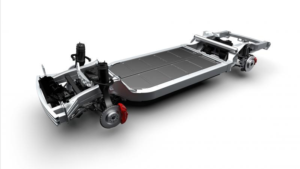
Rivian’s Skateboard Chassis
This is the “skateboard” concept you’ve probably heard about – the wheels, axles, motors, suspension, and batteries are one integrated chassis that the rest of the vehicle is assembled onto. Once you have this skateboard (and no longer need many of the bulkiest elements of the powertrain like the internal combustion engine pictured below), you have a lot more flexibility to what the rest of the vehicle looks like. This is where the “tophat” concept comes in. The tophat is the vehicle form factor, the seats, the dashboard, the roll cage, etc…, but may only be indirectly related to the skateboard from a design and manufacturing standpoint.
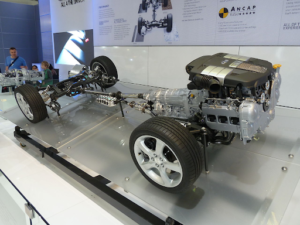
A Traditional Internal Combustion Powertrain
Why is this emergence of the skateboard/tophat paradigm a big deal? It opens up a bunch of different models for how companies make cars. You could have one company designing or manufacturing skateboards, and another doing the same with tophats, and integrating them afterward. This is the idea behind what Philippe Chain and Fredrick Filloux argue may be a global revolution in vehicle manufacturing. These companies could be in close partnership, or some companies could offer standardized modular skateboards than anyone could build onto.
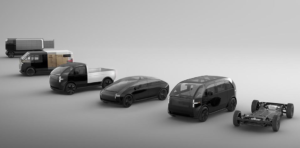
An image from electric vehicle company Canoo shows how different “Tophats” could fit on the same “skateboard” chasis
And we’re seeing variations of this idea in the market today. EV design startup Fisker recently made a deal with auto supplier Magna to build their vehicles. Foxconn is developing an EV hardware and software platform architecture that will enable firms to outsource a lot of the vehicle engineer process, and partnering with Yulon to be able to manufacture as well (Hat tip to Trucks’ Future of Transportation for highlighting these recent partnership agreements). Rivian’s skateboard is one reason Amazon invested in the company and is developing a delivery vehicle with the business.
Of course, building a street legal car is still a complex and expensive endeavor, but this modularity and flexibility should make it easier for a large number of companies and vehicle form factors to come to market.
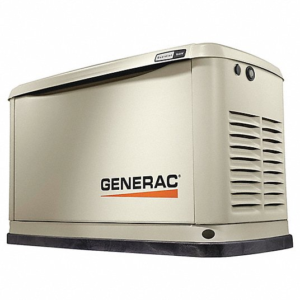
With Our Powers Combined
The backup power generation business Generac recently acquired Enbala, whose software helps coordinate distributed energy resources. As noted in the Greentech Media article I linked to, it is the latest in a number of backup power companies acquiring or collaborating with grid services companies (Wärtsilä, Cummins, Rolls Royce, etc…), merging a traditional hardware business (generators and backup power) with a newer software segment (distributed energy resource management). Energy storage solutions provider Fluence (hardware) also acquired Advanced Microgrid Solutions (software), charting a similar course.
These marriages enable the existing generators to add additional value streams (by participating in demand response programs or selling power into wholesale markets, for example) and comes as the grid continues to add more distributed resources. Meanwhile, the Federal Energy Regulatory Commission recently issued Order 2222 which should further open up power markets to distributed generation and increase the value of these hardware-software acquisitions and collaborations (although this isn’t going to happen overnight).
We can expect this trend to continue, as our grid management evolves to take better advantage of (and fairly compensate) flexible resources. And, as more renewables are added to the grid, flexibility should continue to increase in value. Even as we continue to decarbonize, there should be a role for (emissions-intensive) diesel generators for some time to come, because of the flexibility they can provide to help balance out higher levels of more variable renewables.
Climate Services are Financial Services
Earlier this year we talked about how Stripe was investing in carbon removal projects and I had hoped they wouldn’t be the only companies to do so:
Stripe is skipping carbon offsets in favor of investing in real carbon removal projects. Hopefully, these projects come to fruition and this becomes a trend. Software businesses are well-positioned to start investing in carbon removal projects, as they tend to have 1) low carbon intensity (starting with a lower baseline), 2) high margins (room to work with), and 3) consumer-facing brands (where they can gain a marketing benefit).
And now, in addition to addressing their own emissions, they are creating a new business feature – enabling Stripe’s financial services customers to participate in these carbon removal projects as well. I find this interesting because it’s completely in line with their business of implementing useful services for their customers. It happens to be about addressing climate change, but they are providing a solution their customers are presumably looking for. In the process, they are helping to democratize investments in carbon removal projects – it would be incredibly impractical for a small business to try to do this on their own, but as easy as clicking a few settings if an existing service provider is offering it (sort of like how you can add a couple of dollars to a charity drive at the grocery store check out).

Reusing Blog Posts and Plastics
The EU is banning single use plastic bags starting in 2021. I don’t have much to add to the Time article to which I linked, but am required to mention it because I promised to do so when I brought it up in February:
As for new themes that will make the headlines more in 2020? I think alternative protein (plant-based meat and lab-grown meat) will be a big one; plastic bag bans and restrictions (and general concern over single-use plastics) is another consumer trend that I think will show up more as well. Regardless of what the new cleantech news is, you can rest assured we will cover it in the Cleantech Roundup.
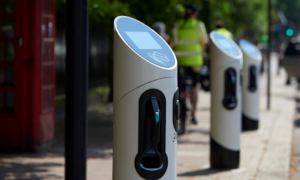
Totally Charged
Total bought London’s largest charging network – this is actually Total’s second charging company acquisition – Total added french charging company G2 Mobility in 2018 (in addition to acquiring a natural gas refueling business). As oil supermajors like Total work to transition their business to focus more on clean energy, I will be interested to see how the electric vehicle charging space plays out.
There are some downsides to charging networks as investments as they are not particularly well differentiated businesses (and indeed may be required to be interoperable in the future), but then again gas stations are interoperable as well. On the flipside, they represent a tangible clean energy asset that may make a lot of sense for businesses who are working to develop or enhance a consumer-facing energy brand.
Read more of Clean Energy Trust’s news and perspectives on Medium.


